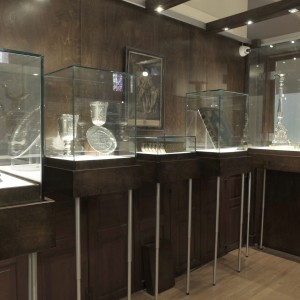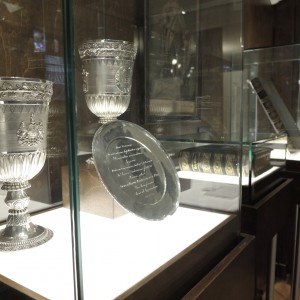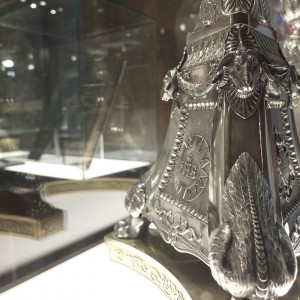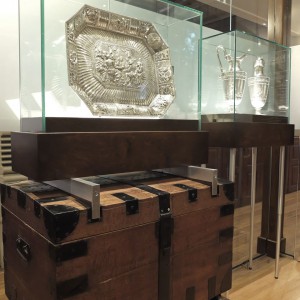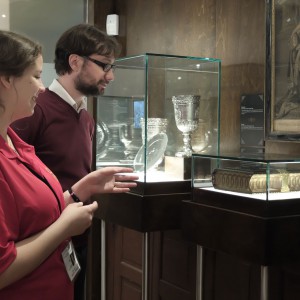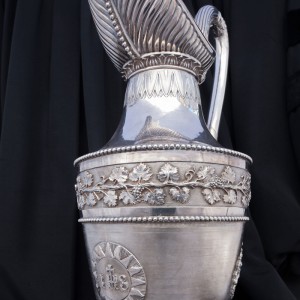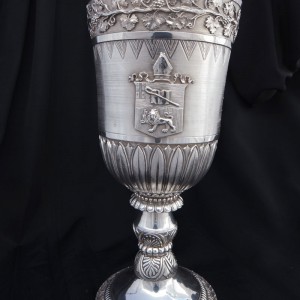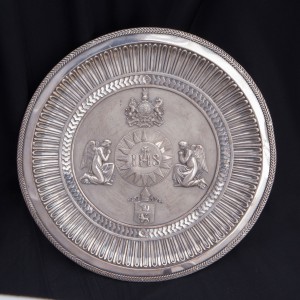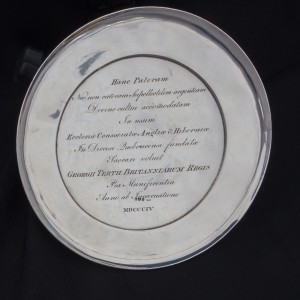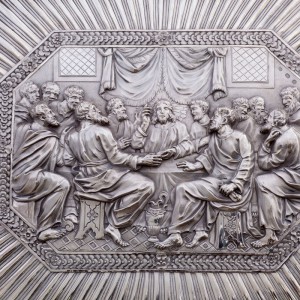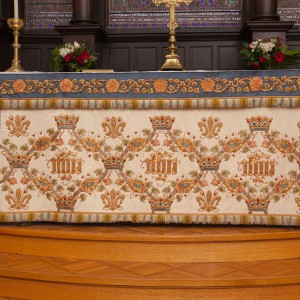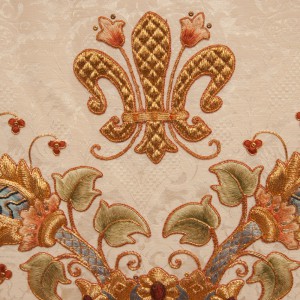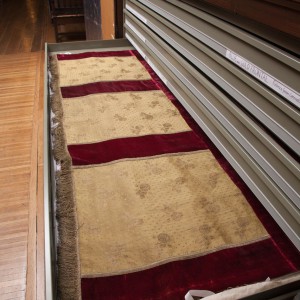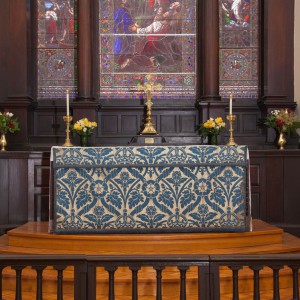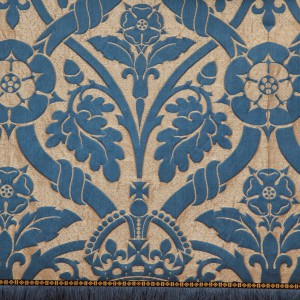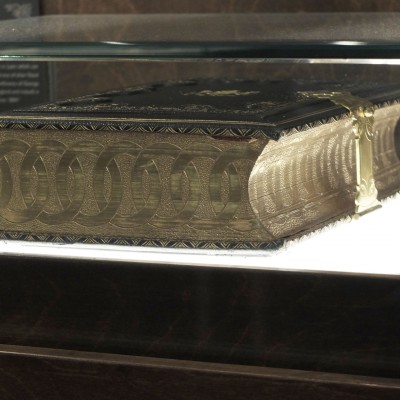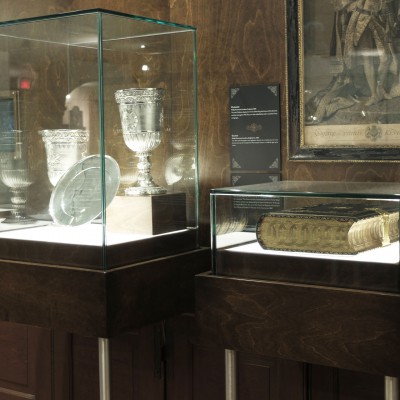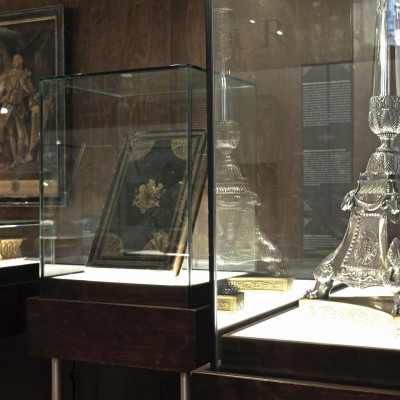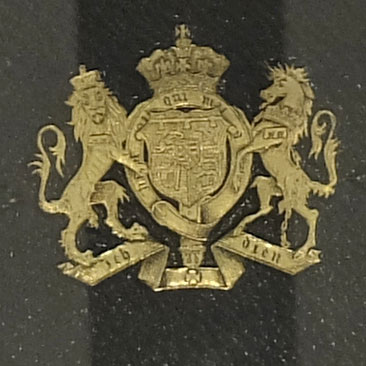The Cathedral of the Holy Trinity was the first Anglican Cathedral built outside the British Isles, erected between 1800 and 1804 at the expense of the Crown. While it was under construction, King George III commissioned the Royal Goldsmiths, Rundell and Bridge, to create an exceptional 10-piece silver Communion Service for the new Cathedral. The altar candlesticks, chalices and other elements are richly adorned, bearing the Arms of the King and of the Diocese of Quebec. This Communion Service is one of the finest examples of Georgian silver ever made. Truly a royal gift!
George III appointed Rundell and Bridge Royal Goldsmiths in 1797. The firm went on to serve four successive monarchs, and became the most important goldsmiths and jewellers of their time. The many prestigious assignments undertaken for the Royal Family by Rundell and Bridge included the creation of the Imperial State Crown used for the coronation of Queen Victoria.
In addition to the ten-piece royal communion service, the King’s gift to the Cathedral included an altar frontal ̶ made with cloth-of-gold and rich crimson velvet which had been used for George III’s coronation in 1760, and prayer books bound in leather, bearing the Royal Arms.
Almost certainly designed by Jean-Jacques Boileau, an artist from France in the employ of Rundell and Bridge, the communion service was made by silversmiths Joseph Preedy and Philip Cornman between 1802 and 1804. The King’s gift, however, did not finally reach Quebec City until 1809 ̶ the year that the British celebrated the 50th anniversary of George III’s reign. By that time, sadly, the King had been stricken with a mental illness from which he would never recover.
An Exceptional Patron of the Arts and Sciences
George III is usually remembered as the “mad monarch” and the king who lost the 13 colonies during the American Revolution. But George III, who in fact suffered only from brief bouts of mental illness during most of his 60-year reign, was also an exceptional patron of the arts and sciences. The Royal Academy was established thanks to his generosity, and he was the patron of such important artists as Thomas Gainsborough, and eminent scientists, like the astronomer William Herschel. George III also created one of the most important private libraries in Europe. Located in the Queen’s house, which later became Buckingham Palace, it was open to scholars and was intended to be a national resource. Always fascinated by the work of artists and craftsmen, George III made regular visits to The Royal Bindery, to watch his bookbinders as they bound his books in fine leather and stamped them in gold with the His Majesty’s Arms. Today, the 65,000 richly bound volumes of the King’s Library are conserved in a spectacular glass tower, six storeys high, in the heart of the British Library.


